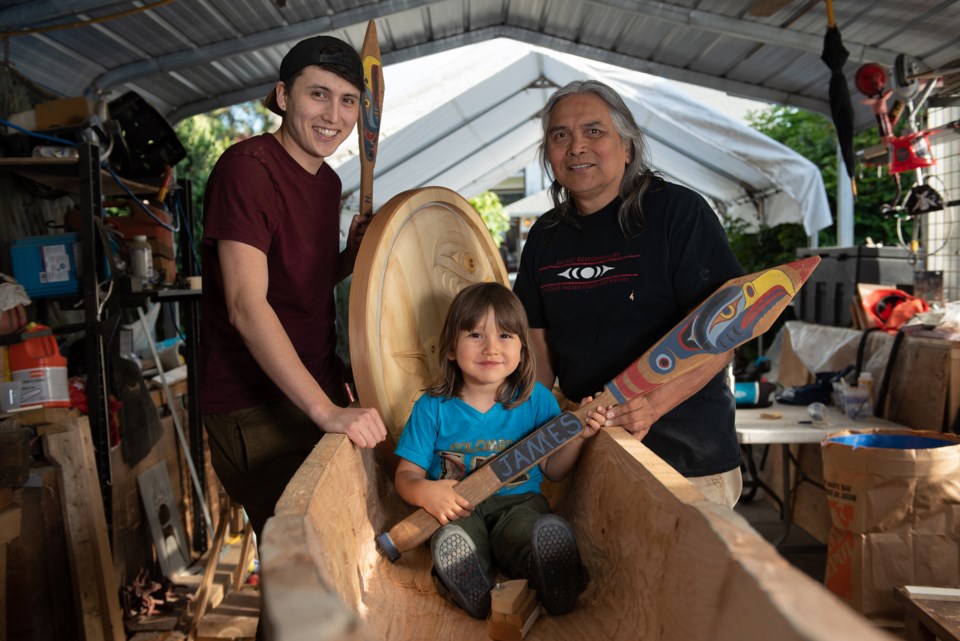Squamish Nation artist Xwalacktun tells stories with art. He also has plenty of stories about his artistic children.
When she was eight, his daughter Keylela came running to him: “Dad, dad, I’m all finished!”
Asking what exactly she had finished, she proudly led him to his own work – a freshly carved totem pole that she had taken upon herself to paint.
“It took two weeks to carve off the paint,” he says with a laugh.
Fortunately, his daughter’s enthusiasm didn’t stop Xwalacktun (also known as Rick Harry) from involving his other children in his workshop. If they were interested, they carved and painted and sanded together.
Today, his son James Harry, 28, and Austin Harry, 25, are both following in his footsteps as accomplished visual artists who weave together multidisciplinary art-making with Coast Salish traditions.
“I would just sit there and watch him carve for hours,” said James, describing a childhood surrounded by art-making.
“I was always mesmerized by it, and I think deep down as a child, I did want to be an artist. Watching his success, and having that foundation kind of made me realize it is possible.”
Xwalacktun was born and raised in Squamish and attended the Emily Carr College of Art. His internationally-recognized work is easy to find from Vancouver up to Whistler – including the massive concrete pedestrian overpass that spans Highway 99 on the way to Squamish.
James is now a contemporary sculptor and painter. His brother Austin is a 3D animator who works for a small video game studio in Vancouver.
“I just let them be who they are, and they were just interested. They just followed along and did their thing,” said Xwalacktun.
All three artists have gone in different directions with their work, but central to their effort is a belief in the power of storytelling and sharing traditional knowledge. James and Austin are passing down some of the same stories and messages their father’s work celebrates.
“I’ve learned from my dad’s teachings, and other artists as well – it’s hard to articulate – that we’re all in the same boat together,” said James.
Xwalacktun compares the Squamish legend of the hero Xwechtáal and his adversary, the two-headed serpent, to the stories in Star Wars or the Lord of the Rings.
“A lot of the stories that we tell, there’s a lot of overlap in how stories are told in other cultures. Many times there are the same messages, but told very differently,” he said. “A lot of my work is focused on some messages that can be passed on. Simple messages for growth, healing, human unity and spirituality.”
James apprenticed under his dad, but while going to school he also experimented early with other materials and forms.
That process led to the creation of his metal totem poles, including one which incorporates LED lighting that can be seen at the Vancouver International Airport. Recently, Austin’s own sculptural work – a 3D printed design of the Sínulhka, the two-headed serpent – was also on display at the airport.
In the future, Austin said he hopes to bring Coast Salish art style and stories into video games for both Indigenous and non-Indigenous people to enjoy and learn from.
“A lot of things I’ve learned working for my dad have helped me find my own style between traditional Coast Salish art and new technology,” said Austin.
“At this point, our ideas all feed off each other,” added his brother James.
The family may even have one more artist in the wings – while he’s only three years old now, Xwalacktun proudly shows off an iPhone video of his youngest son Stanley chipping away in the studio.
“I’m continuing on again with Stanley, we sit down and do artwork together,” he said. “It’s just kind of nice to see your young children become who they are. I gave them some direction, but really, they’re just finding their own way.”




